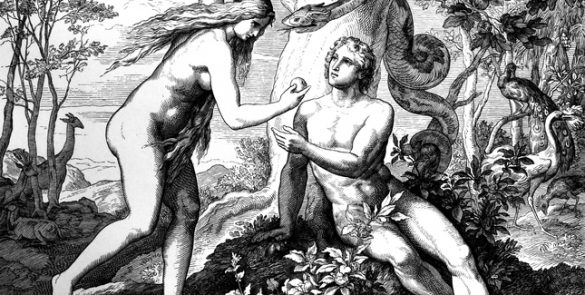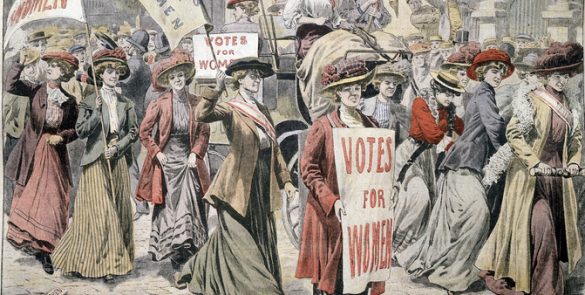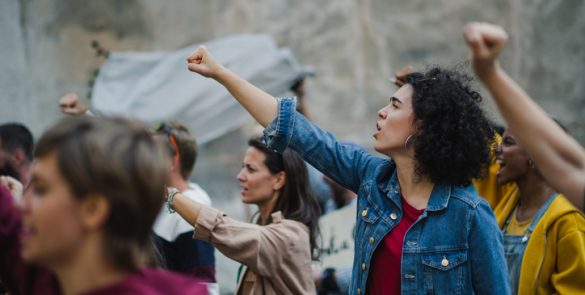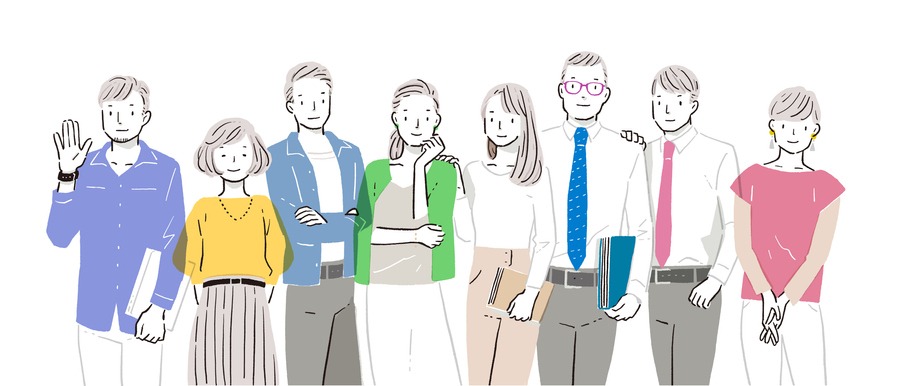Women's Rights Lesson Plan
מערכי השיעור שלנו מאגדים את מיטב התוכן הלימודי מאת הצוות המקצועי שלנו. בכל מערך שיעור מצוין לאילו כיתות הוא מיועד, כך שתוכלו לזהות את התכנים המתאימים עבור התלמידים שלכם.
מערכי השיעור האלה על מתמקדים בנושאים שונים, כגון: פורים, משבר האקלים, או השאלה אם יש חיים מחוץ לכדור הארץ. כחלק ממערכי השיעור של מורפיקסקול התלמידים יוכלו ללמוד על כל אחד מהנושאים האלה ועוד בעזרת משחקים וחידונים הנכללים במערכת הלימוד של מורפיקסקול.
מערכי השיעור החווייתיים שלנו כוללים אמצעי למידה כגון: משחקי אוצר מילים של מורפיקסקול, טקסטים של הבנת הנקרא (אנסינים), רעיונות לדיונים בכיתה, וחידונים מעשירים. בכל מערך שיעור יש א תוכן ייחודי משלו, אז יש הרבה מה לגלות והרבה במה להתנסות.
להלן מערך שיעור על זכויות האישה בעולמנו – מתאים לתלמידי תיכון.
1. נפתח דיון על הנושא ונעודד את התלמידים להביע את עצמם באופן התחלתי על סוגיית זכויות האישה. אפשר להציע לכל תלמיד לפתוח את רשימת אוצר המילים מהחלק השני של מערך השיעור בטלפון הנייד ולנסות להשתמש במילים במהלך הדיון.
2. ניכנס לעומק עם תרגול אוצר מילים שיעזור לבסס הבנה ולהכין את התלמידים לקראת החלק השלישי שבו נתמודד עם אנסין מאתגר בנושא זכויות האישה.
3. נעבוד עם אנסין מאתגר בנושא זכויות האישה. אנו ממליצים לעבור קודם כול על השאלות, כדי למקד את הקריאה.
4. נלמד לחשוב בעזרת תובנות של אישים, סופרים ואנשי רוח בכל הנוגע לזכויות האישה. כל תלמיד וכל תלמידה יבחרו ציטוט, יציגו אותו לכיתה ויסבירו את בחירתו.
5. מטלת בונוס: חידון מורפיקסקול על נשים יוצאות מן הכלל שעשו היסטוריה.
דיון כיתתי - Class discussion
השאלות הבאות נועדו לעורר דיון התחלתי וכללי על הסוגייה. אין כאן תשובות נכונות או לא, ולא צריך להתבסס על שום מידע חיצוני. המטרה היא להוציא מהתלמידים את התובנות והדעות שכבר יש להם, ולתת להם להסתמך על מידע קודם שלהם.
- What comes to mind when you think about women’s rights?
- How do you think women are doing in the world? Are there different situations in different parts of the world?
- Are you aware of some of the issues women have to deal with? Give a few examples.
- What is currently being done to help women in our society?
- Do you think women and men should have different rights? If so, explain your position.
- What do you think can be done to help women in our society?
- Do you think women and men can be interested in the same things? Hobbies, areas of interest, careers, etc. Explain your opinion.
- What is feminism? Do you consider yourself to be a feminist?
Vocabulary Practice - תרגול אוצר מילים
אתם מוזמנים לחבר רשימות מילים משלכם, אולי גם בהשתתפות התלמידים. לנוחיותכם, במערכת רשימות המילים של מורפיקסקול הכנו עבורכם מראש רשימת מילים רלוונטית למערך שיעור זה. לחצו על הכפתור ותועברו אליה. תוכלו לתרגל את אוצר המילים במספר דרכים: חידון רב-ברירה, התאמת כרטיסיות ומשחק איות.
Reading Comprehension – קטע הבנת הנקרא על זכויות האישה
לפני שאתם ניגשים לקרוא את קטע הקריאה, יש לעבור תחילה על השאלות מתחת, ואז לקרוא את הטקסט תוך כדי התמקדות בנשאל בשאלות.
Women’s Rights
In many countries today women have the same rights as men. They have the right to own property. They have the right to get an education. They have the right to work at any job they choose. They have the right to vote. They have the right to be elected president or prime minister of their country. But it has not always been this way. Women called feminists worked for many years to get these rights.

Through most of history, women have not been treated as equals with men. Women were thought to be naturally weaker and less smart than men. Some myths and religions even present women as a source of evil.
For all these reasons, women were not given the same rights as men. But when women were given some freedom, they made important achievements. For example, some women became powerful leaders. Queen Elizabeth I ruled England for 45 years in the 1500s. Catherine the Great was empress of Russia in the 1700s.
In the late 1700s many people in Europe and North America began to speak of individual freedom. They said that people had rights that governments must respect. But they left out women by using phrases such as “the rights of man.” During this time some free-thinking women spoke up for the women’s rights. One of them was the English feminist Mary Wollstonecraft. She said that women should receive the same opportunities as men in education, work, and politics.

Women knew that if they were going to change society they must win suffrage, or the right to vote. In this way they could take part in government. Then they could influence policies and laws.
Around the World
Women in different countries worked for voting rights. Women gained the vote in New Zealand in 1893, in Australia in 1902, in Finland in 1906, and in Norway in 1913.
In the United Kingdom, Emmeline Pankhurst got women to march in the streets for voting rights. In 1918 British women over age 30 won the vote. In 1928 the age was lowered to 21.
Other countries changed more slowly. Women in Switzerland could not vote until 1971. Even in the early 2000s, women in some Middle Eastern countries still did not have the right to vote.
The United States
In the United States the women’s rights movement grew out of the abolitionist, or antislavery, movement. Lucretia Mott and Elizabeth Cady Stanton were abolitionists who also led the first women’s rights convention.
Stanton and Susan B. Anthony formed the National Woman Suffrage Association in 1869. Lucy Stone formed the American Woman Suffrage Association in the same year. The two groups united in 1890. The American movement finally achieved its goals in 1920, when the Nineteenth Amendment to the U.S. Constitution was passed. It gave women the right to vote nationwide.

A new women’s rights movement began in the 1960s. This movement was commonly called “feminism” or “women’s liberation.” Feminists in the United States worked to guaranteed all legal rights, not just voting rights, to women.
But the women’s rights movement still made gains. For example, feminists helped make birth control available to more women. Birth control gives women greater control over when they have children. Birth control allowed more women to have careers.
Women who chose careers at first faced much unfairness in the workplace. Congress passed laws to help them. The Equal Pay Act of 1963 said that men and women had to get the same pay for doing the same job. The Civil Rights Act of 1964 included equal rights for women as well as for racial minorities. The act made it illegal to set aside some jobs for men and others for women.
Education also became more available to women. By the end of the 1900s, women were earning more than half of all college degrees in the United States.
Many women were elected to government offices, too. Women have served as president or prime minister in India, Ireland, Israel, New Zealand, Pakistan, Sri Lanka, the United Kingdom, and many other countries.
Adapted from “Women’s Rights”, Britannica Kids, Encyclopædia Britannica. 18 May. 2022. kids.britannica.com/kids/article/womens-rights/353931
5. What does “suffrage” mean?
a. The right to vote.
b. The right to suffer.
c. The right to give birth.
d. The right to be a woman.
6. According to the text, which country gave its women suffrage in the 1800s?
a. Israel
b. New Zealand
c. The United States
d. Germany
7. The National Organization for Women, the National Woman Suffrage Association and the American Woman Suffrage Association are examples of…
a. Feminist laws.
b. Men’s rights groups.
c. Feminist organizations.
d. Female military organizations.
8. What are some of the gains the feminists movement made, aside from
a. women’s suffrage?
b. Feminists made birth control available to more women.
c. Education became available to women thanks to the feminists’ struggle.
d. In the US, women and men have to be paid the same for the same job.
e. All the answers are correct.
- 1.What are people who work for equality between men and women called?
a. Abolitionists
b. Misogynists
c. Feminists
d. Women
2. Myths and religions are mentioned in the text. In what context?
a. Myths and religions helped women through history.
b. Women are seen as the source of evil in some myths and religions.
c. Feminists use myths and religions to convince people women should have equal rights.
d. Myths and religions are important to many women.
3. The text gives two examples of powerful female leaders. They are…
a. Queen Elizabeth I & Catherine the Great
b. Catherine the Great & Mary Wollstonecraft
c. Mary Wollstonecraft & Queen Elizabeth I
d. Lucretia Mott & Elizabeth Cady Stanton
4. When did the idea of individual freedom start becoming popular?
a. The late 1700s
b. The late 1900s
c. The early 1800s
d. The early 1700s
לחשוב עם ציטוטים - Thinking with Quotes
קחו את הזמן לקרוא את הציטוטים הבאים. מה דעתכם על כל אחד? האם אתם מסכימים? בחרו ציטוט אחד, הסבירו את משמעותו לכיתה, והציגו את עמדתכם לגביו.
1.“Men are afraid that women will laugh at them. Women are afraid that men will kill them.” – Margaret Atwood
2.“The history of men's opposition to women's emancipation is more interesting perhaps than the story of that emancipation itself.” – Virginia Woolf (1882-1941)
3.“My own sex, I hope, will excuse me, if I treat them like rational creatures, instead of flattering their fascinating graces, and viewing them as if they were in a state of perpetual childhood, unable to stand alone.” – Mary Wollstonecraft (1759-1796)
4.“No woman can call herself free who does not control her own body.” – Margaret Sanger (1879-1966)
5.“Out of the ash I rise with my red hair And I eat men like air.” – Sylvia Plath (1932-1963)
6.“I do not wish women to have power over men; but over themselves.” – Mary Shelley (1797-1851)
7.“Each time a woman stands up for herself, without knowing it possibly, without claiming it, she stands up for all women.” – Maya Angelou (1928-2014)
8.“Then let us have our liberty again,
And challenge to yourselves no sovereignty;
You came not in the world without our pain,
Make that a bar against your cruelty;
Your fault being greater, why should you disdain
Our being your equals, free from tyranny?
If one weak woman simply did offend,
This sin of yours, has no excuse, nor end.” – Æmilia Lanyer (1569-1645)
9.“I know what I want, I have a goal, an opinion… Let me be myself and then I am satisfied. I know that I’m a woman, a woman with inward strength and plenty of courage.” – Anne Frank (1929-1945)
10.“We cannot accept any code or creed that uniformly defrauds woman of all her natural rights.” – Elizabeth Cady Stanton (1815-1902)
:EXTRA
Bonus Task – Extraordinary Women Quiz – מטלת בונוס – חידון נשים שעשו היסטוריה
בנוסף, תוכלו ליהנות ממערכי שיעור נוספים בהם: מערך שיעור על חייזרים ומערך שיעור על טיולים.













